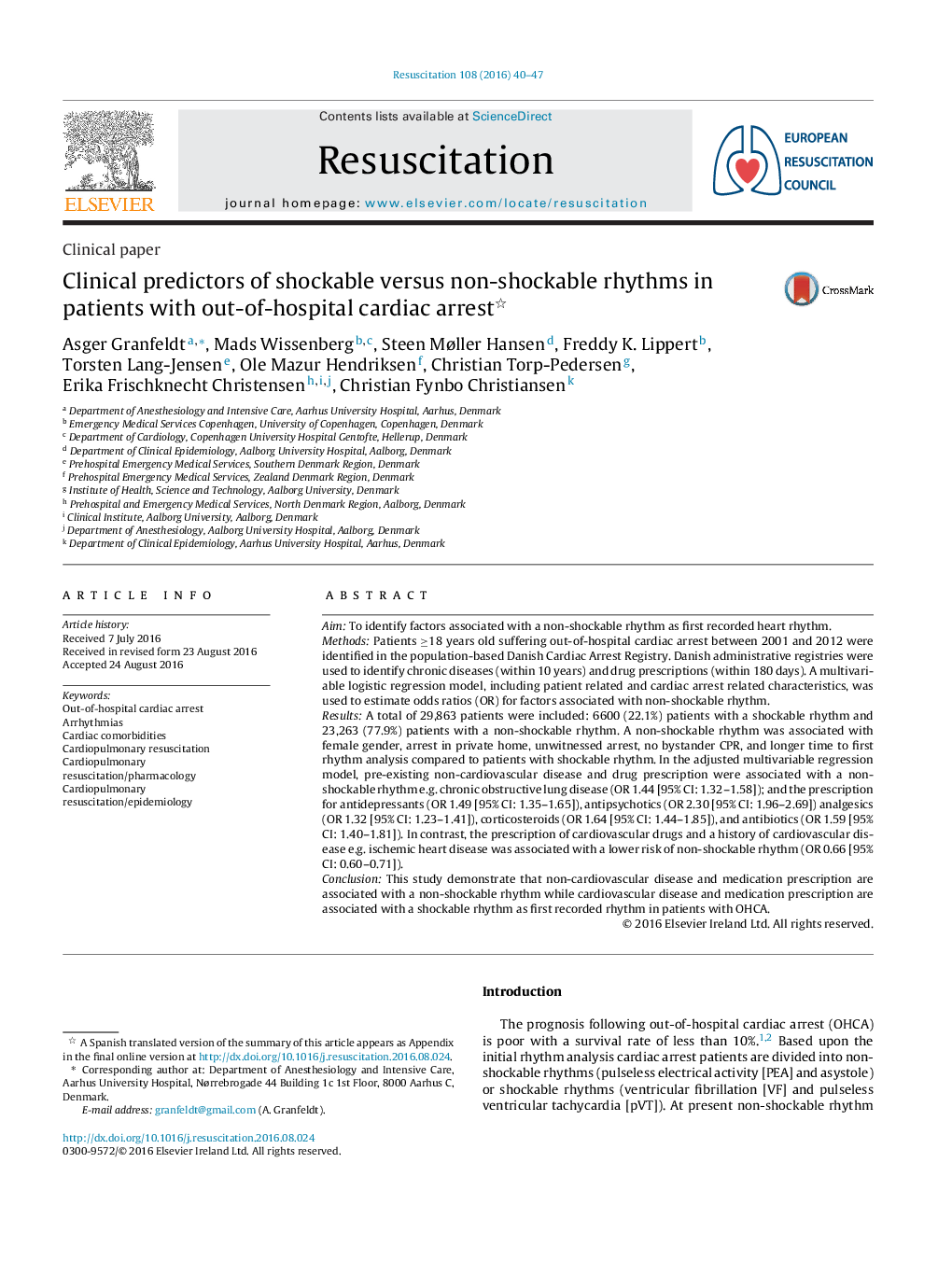| کد مقاله | کد نشریه | سال انتشار | مقاله انگلیسی | نسخه تمام متن |
|---|---|---|---|---|
| 3007621 | 1578976 | 2016 | 8 صفحه PDF | دانلود رایگان |
AimTo identify factors associated with a non-shockable rhythm as first recorded heart rhythm.MethodsPatients ≥18 years old suffering out-of-hospital cardiac arrest between 2001 and 2012 were identified in the population-based Danish Cardiac Arrest Registry. Danish administrative registries were used to identify chronic diseases (within 10 years) and drug prescriptions (within 180 days). A multivariable logistic regression model, including patient related and cardiac arrest related characteristics, was used to estimate odds ratios (OR) for factors associated with non-shockable rhythm.ResultsA total of 29,863 patients were included: 6600 (22.1%) patients with a shockable rhythm and 23,263 (77.9%) patients with a non-shockable rhythm. A non-shockable rhythm was associated with female gender, arrest in private home, unwitnessed arrest, no bystander CPR, and longer time to first rhythm analysis compared to patients with shockable rhythm. In the adjusted multivariable regression model, pre-existing non-cardiovascular disease and drug prescription were associated with a non-shockable rhythm e.g. chronic obstructive lung disease (OR 1.44 [95% CI: 1.32–1.58]); and the prescription for antidepressants (OR 1.49 [95% CI: 1.35–1.65]), antipsychotics (OR 2.30 [95% CI: 1.96–2.69]) analgesics (OR 1.32 [95% CI: 1.23–1.41]), corticosteroids (OR 1.64 [95% CI: 1.44–1.85]), and antibiotics (OR 1.59 [95% CI: 1.40–1.81]). In contrast, the prescription of cardiovascular drugs and a history of cardiovascular disease e.g. ischemic heart disease was associated with a lower risk of non-shockable rhythm (OR 0.66 [95% CI: 0.60–0.71]).ConclusionThis study demonstrate that non-cardiovascular disease and medication prescription are associated with a non-shockable rhythm while cardiovascular disease and medication prescription are associated with a shockable rhythm as first recorded rhythm in patients with OHCA.
Journal: Resuscitation - Volume 108, November 2016, Pages 40–47
